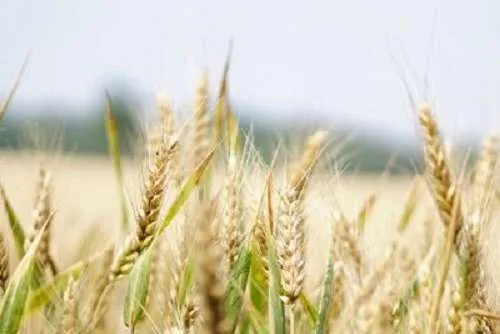Learn to successfully grow cereals, pulses and pseudo grains!
You will learn the five factors needed to grow grains profitably in this course and more:
- Good quality seed, with high germination rate
- Protect seeds against pests and disease
- Prepare seedbed well
- Adequate nutrition in soil
- Timely sowing – temperature, moisture and climatic conditions suitable
What you will do:
- Classify important existing and emerging grains or cereals grown around the world and explain the production systems both large and small scale, used for growing, harvesting and storing grains in different countries.
- Describe important farm structures, equipment, vehicles, supplies and natural resources required for successful production of cereal/grain crops
- Describe and compare the properties and production systems of the major ‘cool season’ cereals, namely: wheat, triticale, spelt, barley, oats and rye.
- Describe and compare the properties and production systems of the major ‘warm season’ cereals, namely: maize, sorghum and millet
- Describe the four main broad habitats where rice is grown and explain the variety of production systems used within these different habitats.
- Explain and compare the production systems and uses of important cool and warm season pulse crops grown around the world.
- Describe production of ‘non-grasses’ that are existing or emerging as important ‘cereals’, such as chia, quinoa, amaranth and buckwheat.
- Explain post harvest storage and processing methods used for cereals for human consumption and examine the various sales procedures used.
- Describe the production of important warm and cool season grasses used for forage and stock feed
- Describe the storage, processing and sale of cereals used for livestock and demonstrate the calculation of some sample stock rations
Detailed Course Outline
There are 9 Lessons in this course:
1. Introduction to Grains
-
- Production of Crops in Different Climates and Ecological Zones
- Climate
- Soil
- Aspect and Altitude
- Crop Growing Periods and Growing Degree Days.
- Cropping Season as Affected by Moisture Availability
- World Cropping
- Cereal Crop Growth Stages
- Jointing Stage
- Booting Stage
- Grain Fill Stage
- Zadok Scale
- Grain Types
- Wheat
- Barley
- Sorghum
- Oats
- Rice
- Corn
- Canola
- Pulses
- Production Systems
- Crop Rotation
- Cover Crops
- Crop Islands
- Production of Crops in Different Climates and Ecological Zones
2. Cereal/Grain Infrastructure and Machinery Requirements
-
- Equipment Requirements
- Choosing A Tractor and Accessories
- Equipment and Tools Used in Different Crop Production Operations
- Tillage
- Seed
- Certified and Saved Seed
- Seed Production
- Planting
- Other Crop Production Operations
- Irrigation Equipment
- Crop Lodging
- Harvest
- Cereal Harvesting Equipment
- Threshers/Combined Harvester Thresher
- Cleaning
- Grain Storage
- Silos
- Silo Bags
- Bunkers
- Insect Pest Control in Grain Storage
- Equipment Requirements
3. Wheat, Triticale, Spelt, Barley, Oats, Rye
-
- Wheat and Spelt
- Cultivars
- Appearance
- Cultivation
- Soil and Fertility
- Nitrogen
- Phosphorus
- Potassium
- Zinc
- Crop Health
- Crown Rot
- Stripe Rust
- Leaf Rust
- Stem Rust
- Yellow Leaf Spot
- Nematodes
- Harvest and Uses
- Tritosecale
- Appearance
- Cultivation
- Soil and Fertility
- Harvest and Uses
- Cultivars
- Oats
- Cultivars
- Appearance
- Cultivation
- Soil and Fertility
- Crop Health
- Harvest and Uses
- Barley
- Cultivars
- Appearance
- Cultivation
- Soil and Fertility
- Nitrogen
- Phosphorus
- Aluminium And Boron Toxicity
- Crop Health
- Crown Rot
- Net Blotch
- Spot Blotch
- Powdery Mildew
- Harvest and Uses.
- Rye
- Winter and Spring Rye
- Cultivars
- Appearance
- Cultivation
- Soil and Fertility
- Crop Health
- Harvest and Uses
- Wheat and Spelt
4. Maize, Sorghum, Millet
-
- Maize
- Cultivars
- Appearance
- Cultivation
- Soil and Fertility
- Nitrogen
- Phosphorous
- Potassium
- Sulphur
- Iron
- Crop Health
- Boil Smut (Ustilago Maydis)
- Rust (Puccinia Sorghi)
- Stalk and Cob Rots
- Harvest and Uses
- Sorghum
- Cultivars
- Appearance
- Cultivation
- Soil and Fertility
- Crop Health
- Ergot (Claviceps Africana)
- Insect Pests
- Heliothis
- Sorghum Midge
- Harvest and Uses
- Millet
- Cultivars
- Appearance
- Cultivation
- Soil and Fertility
- Crop Health
- Grey Leaf Spot
- Charcoal Rot
- Pests
- Harvest and Uses
- Maize
5. Rice
-
- Rice (Oryza Spp.)
- Cultivars
- Commonly Cultivated Varieties of Rice
- Grain Type – Colour: Brown Vs White
- Different Varieties for Eating
- Cultivation
- Environmental Overview
- Altitude
- Water
- Irrigating Rice
- Rainfed – Terrace Systems.
- Crop Health and Diseases
- Bacterial Blight
- Bacterial Leaf Streak
- Blast, Leaf and Collar
- Red Stripe
- Harvest
- Ratooning
- Rice-Wheat Systems
- Rice (Oryza Spp.)
6. Pulse Crops
-
- Soybeans
- Crop Health
- Pidgeon Peas (Congo Beans)
- Appearance
- Cultivars
- Cultivation
- Soil and Fertility
- Crop Health
- Harvest
- Lima Beans
- Appearance
- Cultivation
- Soil and Fertility
- Crop Health
- Harvest
- Cowpeas
- Appearance
- Cultivation
- Soil and Fertility
- Crop Health
- Harvest
- Mung Beans
- Cultivation
- Soil and Fertility
- Crop Health
- Harvest
- Chick Peas
- Soil and Fertility
- Crop Health
- Lentils
- Appearance
- Cultivation
- Soil and Fertility
- Crop Health
- Harvest
- Faba Beans
- Appearance
- Cultivation
- Soil and Fertility
- Crop Health
- Harvest
- Field Peas (Green Peas)
- Growing Conditions
- Propagation
- Soil
- Fertility
- Crop Health
- Soybeans
7. Pseudo Cereals
-
- Chia
- Quinoa
- Appearance
- Cultivation
- Soil and Fertility
- Crop Health
- Harvest
- Amaranth
- Appearance
- Cultivars
- Cultivation
- Soil and Fertility
- Crop Health
- Harvest
- Buckwheat
- Cultivation
- Soil and Fertility
- Crop Health
- Sesame Seed
- Cultivars
- Cultivation
- Soil and Fertility
- Crop Health
- Harvest
8. Processing Grains for Human Consumption
-
- Post-Harvest Processing
- Drying
- Morphologically Determining Moisture Content
- Portable Moisture Meters
- Simple Drying Test to Determine Moisture
- Laboratory Testing
- Types of Drying
- Natural Drying
- Heat-Drying (Hot Air Drying)
- When Is It Dry?
- Storage
- Aerating and Cooling
- Moisture Content in Stored Grain
- Treatment During Storage
- Mechanical Treatments
- Grain Processing for Consumption
- Hulling
- Wheat Processing
- Cleaning and Scouring
- Tempering
- Grinding/Milling of Wheat
- Bleaching the Flour
- Blending and Final Production of Flours
- Extraction Rate
- Processing Maize (Corn)
- Corn Refining
- Processing Rice
- Processing Oats
- Processing Pseudo grains
- Quinoa and Amaranth
- Fortifying Foods
- Post-Harvest Processing
9. Grains for Livestock Consumption
-
- Differences Between Crops for Human Consumption and Those for Animal Consumption
- C3 And C4 Grasses – C3 Plants – C4 Plants – Legume Forage – Mixed Grass and Legume Forages
- Nutrient-Dense Forages and Forage Quality
- Forage Maturity and Nutritional Value
- Forage Quality
- Palatability and Taste
- Intake
- Digestibility
- Nutrient Density
- Anti-Nutritional Factors
- Livestock Performance and Growth
- Specific Forage, Feed and Grass Types
- Feeding and Ration Calculations

